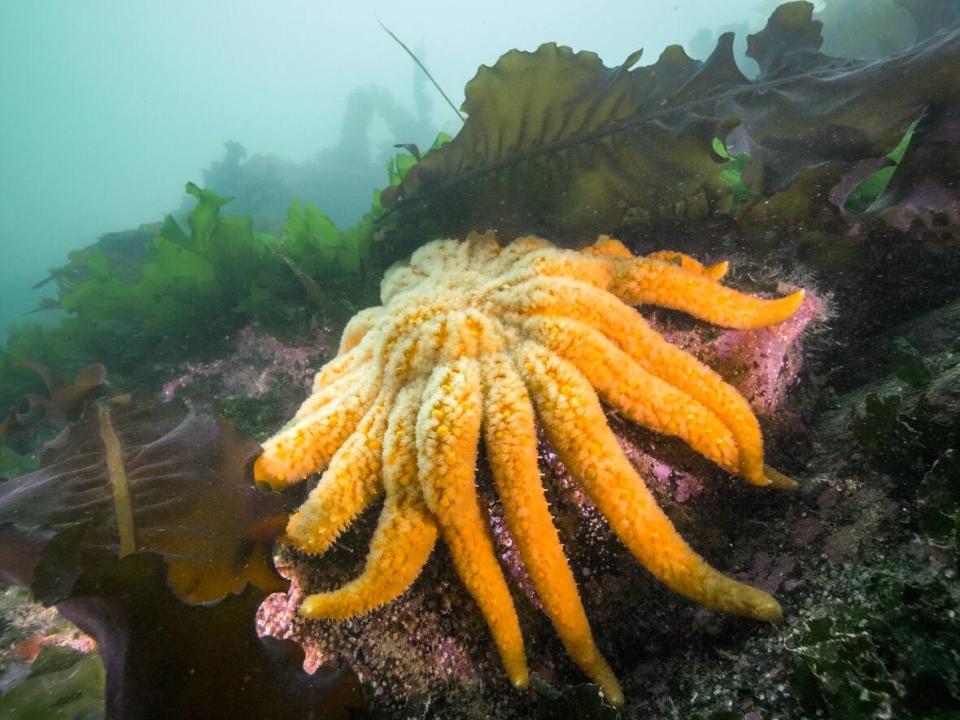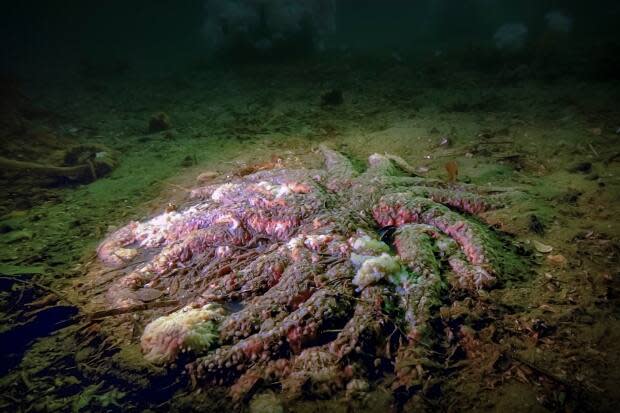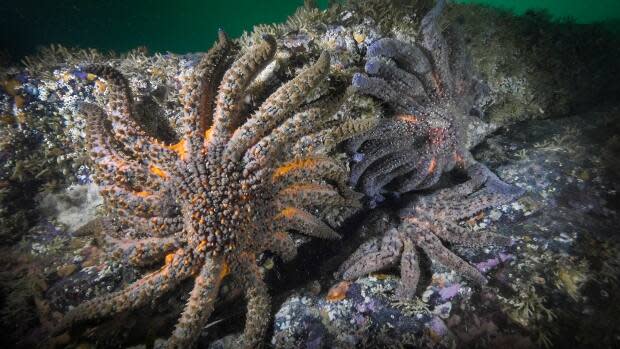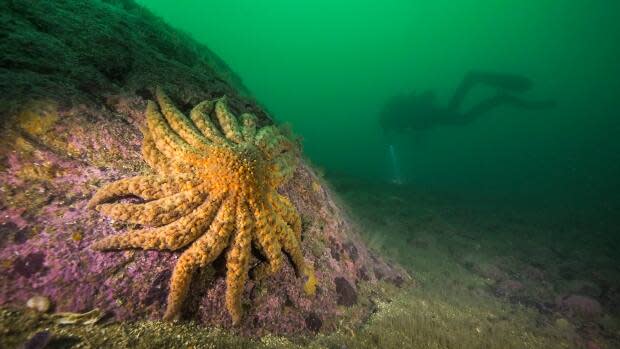B.C. ocean researchers push to help understand, restore all but extinct sunflower sea stars

A Vancouver-based conservation organization is pushing for continued study and more resources to help restore a species of sea stars following a mass die off and cascading consequences for other marine life.
A study released this week from Ocean Wise says that the decimation of sunflower sea stars, which began in 2013, has resulted in barren underwater landscapes in places like Howe Sound as the disappearance of the marine animals has thrown ecosystems out of whack.
"The issue of sea stars is highlighting the importance of doing far more aggressive ocean restoration," said Carlos Drews, executive vice president of conservation with Ocean Wise.
Ocean Wise wants to better understand how to restore sunflower sea star populations through captive breeding and replant sea kelp in places where it's been wiped out as part of an ecosystem domino effect caused by the sea star die off.

Ocean Wise also wants to have sunflower sea stars recognized by the Committee on the Status of Endangered Wildlife in Canada (COSEWIC) and the Species at Risk Act (SARA).
"We need to act on many fronts," said Drews.
Ocean Wise's study is just the latest from researchers across the globe tackling the biggest marine life mortality event ever recorded.
In 2013, sea stars — also known as starfish — like the sunflower, which can grow up to a metre in diameter and have two dozen arms, began displaying lesions, which eventually caused the sea star to dissolve and die.
In the sunflower sea star's case, 99 to 100 per cent of the creatures were wiped out in some areas, said Ocean Wise.
With sunflower sea stars gone, their main diet — green sea urchins — multiplied in number and ate through entire forests of sea kelp, eventually wiping out the plant in some areas and creating what Ocean Wise describes as 'urchin barrens.'

The agency says kelp forests are important breeding grounds and nurseries for many fish and invertebrate species, sequester carbon, and help prevent ocean acidification.
Drews said researchers with Ocean Wise are working on projects that would have humans harvest the urchins for food as a way to keep their numbers in check and plant sea kelp seeds to restore underwater forests that were wiped out.
Remnant populations
According to other researchers, successful restoration efforts for sea stars will depend on more clearly understanding what caused the wasting disease to begin with.
"It's imperative to understand before we can really consider restoring this population — what killed it?" said Alyssa Gehman, a marine disease ecologist at the Hakai Institute, and an adjunct professor at the UBC Institute of Oceans and Fisheries.
Warmer ocean temperatures, which result in less oxygen for sea stars to breathe seem to be a factor, but Gehman says scientists still aren't sure of all the factors.
Gehman has also been studying pockets of the creatures that still exist. The ones that remain are mostly found in fjords along the coast of Washington State, B.C., and Alaska.
Gehman, who calls the survivors remnant populations, does not yet know if they exist in those places because the disease never made it there, or if the cooler water is helping sea stars to persist.
It shows just how many unanswered questions remain over the die off, which happened nearly 10 years ago.

Researchers still need to figure out just how big a sunflower sea star needs to be to reproduce or what time of year spawning occurs.
"This kind of information is critical for informing captive breeding efforts and for understanding if the individuals remaining in wild populations are large enough to reproduce and sustain a population," reads the Ocean Wise report.
The International Union for the Conservation of Nature (IUCN) declared the sunflower sea star critically endangered globally in 2020.
Researchers like Drews and Gehman want a similar designation under Canada's laws so the sea star would be afforded greater federal protections and resources to help with its recovery.
Ocean Wise is part of a team that hopes to make an application to the federal government as early as next year.

